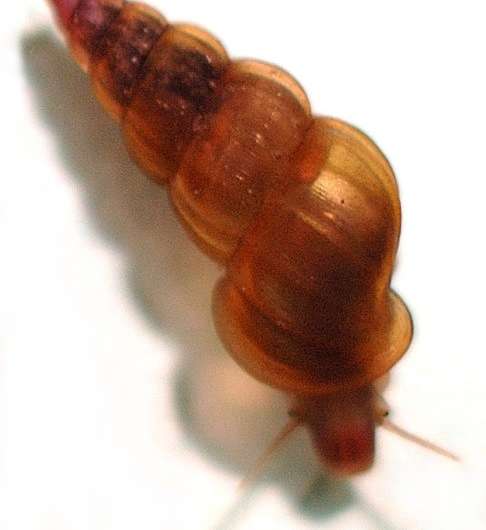Land use affects spread of schistosomiasis-carrying snails in Asia

Over the past six decades, China has carried out an aggressive program to control schistosomiasis, or snail fever, a disease caused by a parasitic worm that moves from its snail hosts to humans. Cases of the disease in China plummeted by more than a hundred fold. In recent years, however, areas where the parasite had been eliminated are seeing new infections, and the range of the snail host has expanded into new areas. Now, to help inspire new ways of stopping the spread of schistosomiasis, researchers reporting in PLOS Neglected Tropical Diseases have studied the dispersal patterns of the snails that carry the infection. Irrigation channels and other land use patterns, they found, affect the likelihood of the snails spreading between neighboring areas.
In East and Southwest Asia, Schistosoma worms spread to humans from Oncomelania hupensis snails when the snails live in the same water that humans use to bathe, swim, or wash. Little was known, however, about how the Oncomelania snails spread throughout the environment. In the new work, Justin Remais, of the University of California, Berkeley, USA and colleagues collected 833 snails from 29 villages in the eastern mountainous zone of China's Sichuan Province, where Schistosoma has re-emerged in recent years following previous control. Each snail was genotyped and the gene sequences were used to determine migration patterns between the locations. Additional data were collected on land use and geographic features around each collection site.
The researchers found that, across the studied villages, 14 to 33 percent of sampled snails were recent migrants—new to the location within one or two generations—and they found genetic evidence of dispersal as far as 27 miles (44 kilometers). But some sites had higher rates of migrants than others. While distance between villages, and greater connectivity, was predictive of movement between sites, land-use patterns also played a significant role. The more irrigation channels a village had, for instance, the more likely they were to both attract and retain new migrant Oncomelania snails. Agricultural lands and streams were also conducive to movement, while barren land, built land, and standing water slowed the snails on any given path between sites. The work was limited, however, in that it did not track actual routes and means of snail movement and did not study differences in migration between snails infected with Schistosoma and those not infected.
"The progress China has made toward elimination of schistosomiasis is threatened by an expansion of territory suitable for intermediate hosts under future climate and land use scenarios," the researchers write. "A combination of the analysis reported here with control programs based on landscape suitability could yield new control strategies that target where snails currently are, as well as where they may migrate, providing barriers to the establishment or re-establishment of host populations in new areas."
More information: PLOS Neglected Tropical Diseases, DOI: 10.1371/journal.pntd.0005151
Journal information: PLoS Neglected Tropical Diseases
Provided by Public Library of Science


















